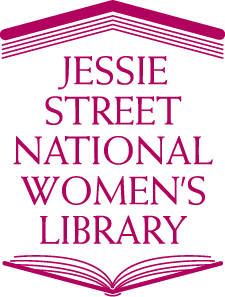24.05.1892 TO 04.01.1987
Tapestry series no. 10
Contributed by Betty Butcher
Parents Henry and Grace Leggo. Born in Daylesford Victoria. Youngest of 10 Children, three of whom died in childhood.
Daylesford today is a tourist/spa centre. During Ida’s childhood it was a gold mining district with a large population including Chinese workers, who lived along the Jim Crow Creek that was later converted into the present day Daylesford lake. Ida remembered visiting the Chinese settlement, with her brother Gordon, and playing tricks on the workers (eg, playing knick knack on their doors).
She attended Daylesford state school but left at an early age to assist in the family shop (father was a grocer) and help her mother with the housework. At that time it was a common practice for girls to stay home whilst boys continued education.
In her early twenties Ida began being involved in community affairs and helped raise money for the building of the Daylesford hospital in a ‘Queen Carnival’ where she played the ‘Queen’.
She married Gordon Hine Dolphin (also from Daylesford) upon his return from WW1 on 8th January 1918 at Moonee Ponds and a little later they established their first home in Footscray, whilst retaining contact with family members in Daylesford.
Ida had an outgoing personality and made friendships easily. The main shopping area in Footscray was in Nicholson Street with the main shop Forges owned and run by the Forges family and employees who had been with the business for many years. As a child it was an interesting experience to shop with my mother who seemed to know all the shopkeepers personally. To enter Forges was to greet and converse individually with members of the Forges family including old Mr Forge and employees in each department. She always had a friendly word with the shopkeepers who knew her well.
Two children of the marriage are James Henry (Harry) and Ida Betty (Betty).
When Harry and Betty attended Geelong Road State School, Ida became an active member of the Mother’s Club, including a period as President during over a decade of service. Part of the fund raising was euchre parties at the school each Saturday night.
Ida was always interested in community activities. She did welfare work at the Children’s Welfare Department (now Social Welfare Services). This meant visiting couples who wished to become foster parents and checking on placements. She always chose parents on the basis of a loving home rather than material wealth.
I remember going with her to a shack in Brooklyn where a couple lived by trading junk. The children wore clothes made from hessian bags but ‘home’, which was made from pieces of tin and cloth, was clean and welcoming. I enjoyed playing with the boys at the junkyard. Ida usually became a friend of such families and was proud that the boys, in this particular family, grew up to have professional careers. It is doubtful whether his parents would have satisfied today’s criteria as foster parents.

